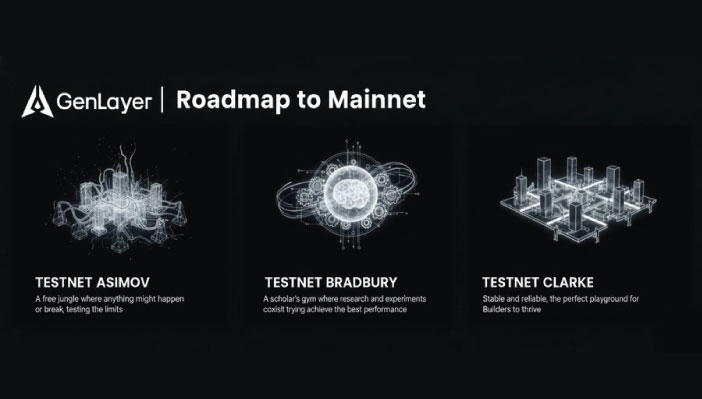Table of Contents

Decentralized Identity: Linking Blockchain Wallets to Social Media
Decentralized identity is gaining more popularity as users worldwide search for ways to protect their personal information from third parties. Those third parties have often violated their users’ privacy or misused sensitive data. GenLayer’s Intelligent Blockchain now offers a technology to link users’ online identities with their blockchain wallets, eliminating the need for centralized intermediaries.
In this article, we will explore the vast use cases for this new technology and examine practical examples in depth.
Don’t understand what it’s all about?
– Read this article to learn more about GenLayer’s Intelligent Blockchain.
GenLayer: Empowering Users and Developers
Decentralized identity allows people to control their own digital identities without depending on a specific service provider to give them ownership over the information that exists about them online, including user names or buying history.

The image shows the interconnection between Issuer, Holder and Verifier. In a decentralized system the Issuer would confirm the information about the Holders identity, such as f.i. Whether or not this person has a university degree. The verifier could then use this information as proof for his employer without ever engaging with a centralized third party.
Although this example symbolizes the full identity verification process commonly known in the blockchain privacy/identity space, there are other methods of bypassing the centralized middleman. As such decentralized identity can take many forms. One such implementation could be verifying a person’s wallet or on-chain account with their social media profile.
GenLayer simplifies this concept for certain use cases by providing developers with the tools to create applications that link users’ online identities. This opens up many possibilities for developers looking to build decentralized applications that require secure and reliable identity verification.
Linking Identities: Examples and Usecases
Linking users’ online identities to their blockchain wallets or on-chain-accounts can be used for various applications. A developer building a decentralized lending platform on GenLayer could use Intelligent Contracts to verify a borrower’s social media profile and link it to their on-chain account. This would allow the platform to assess the borrower’s creditworthiness based on their online reputation and social connections, enabling undercollateralized lending without the need for traditional credit scores or centralized intermediaries.
.avif)
When users want to link their online identity to their on-chain account, they simply sign a transaction using their GenLayer wallet, requesting confirmation of their identity on a specific platform, such as Twitter. The Intelligent Contract then communicates with the LLM validators, which search the Internet for the user’s identification post. A lead validator proposes an output, and the other validators vote on its validity. If a majority of the validators agree, the transaction is approved, and the user’s identity is verified.
This process eliminates the need for centralized entities in identity verification, ensuring that the process remains transparent, tamper-proof, and resistant to single points of failure. Limiting the use case to a mere lending platform would be a gross underestimation. Intelligent Contracts could also be used to deploy decentralized marketplaces, where buyers and sellers can transact with confidence, knowing that their identities have been verified and linked to their on-chain accounts.
Also, by linking users’ online identities to their on-chain accounts, GenLayer can help streamline the process of tokenizing real-world assets, such as property or artwork, ensuring that ownership is clearly established and verified. This process could basically verify any kind of real-world asset. As more developers recognize the potential of GenLayer’s decentralized identity verification capabilities, we can expect to see a growing ecosystem of applications that leverage this powerful feature to create secure, efficient, and user-centric solutions.
Conclusion
GenLayer’s approach to decentralized identity verification represents a significant step forward in developing secure and efficient identity management solutions. By providing developers with the tools to link users’ online identities with their on-chain accounts, GenLayer enables the creation of a wide range of innovative applications that enable a fully decentralized process.
While GenLayer may not aim to solve all the challenges associated with centralized identity management or disrupt entire social networks, its decentralized identity verification capabilities offer developers a powerful tool to build applications that rely on secure and reliable identity management. As the ecosystem grows and more developers adopt GenLayer’s technology, we can expect to see a wide range of use cases emerge.
Join us on our mission!
Website | Blog | Discord | X (prev. Twitter) | Telegram | Simulator | Docs | Whitepaper
Related articles

GenLayer Roadmap to Mainnet
GenLayer roadmap explained: GenVM, Optimistic Democracy, testnets, and the path to Mainnet.

What Does Trust Mean for an Artificial Intelligence?
An exploration of how trust evolves from a human social mechanism into a machine-governed system, and why GenLayer proposes blockchain-based AI consensus for trustless decision-making











%20(1)%20(1).png)